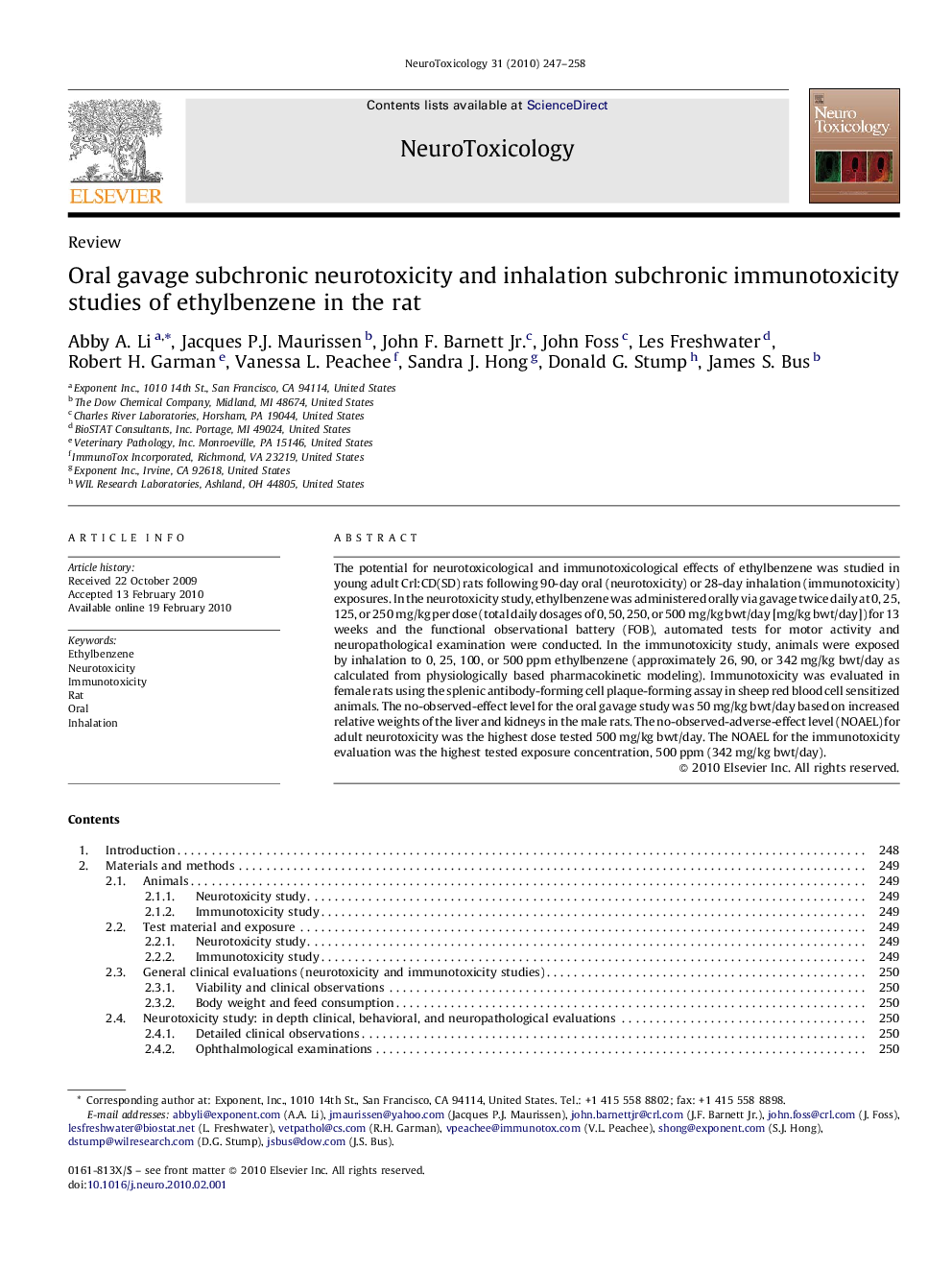| Article ID | Journal | Published Year | Pages | File Type |
|---|---|---|---|---|
| 2589924 | NeuroToxicology | 2010 | 12 Pages |
The potential for neurotoxicological and immunotoxicological effects of ethylbenzene was studied in young adult Crl:CD(SD) rats following 90-day oral (neurotoxicity) or 28-day inhalation (immunotoxicity) exposures. In the neurotoxicity study, ethylbenzene was administered orally via gavage twice daily at 0, 25, 125, or 250 mg/kg per dose (total daily dosages of 0, 50, 250, or 500 mg/kg bwt/day [mg/kg bwt/day]) for 13 weeks and the functional observational battery (FOB), automated tests for motor activity and neuropathological examination were conducted. In the immunotoxicity study, animals were exposed by inhalation to 0, 25, 100, or 500 ppm ethylbenzene (approximately 26, 90, or 342 mg/kg bwt/day as calculated from physiologically based pharmacokinetic modeling). Immunotoxicity was evaluated in female rats using the splenic antibody-forming cell plaque-forming assay in sheep red blood cell sensitized animals. The no-observed-effect level for the oral gavage study was 50 mg/kg bwt/day based on increased relative weights of the liver and kidneys in the male rats. The no-observed-adverse-effect level (NOAEL) for adult neurotoxicity was the highest dose tested 500 mg/kg bwt/day. The NOAEL for the immunotoxicity evaluation was the highest tested exposure concentration, 500 ppm (342 mg/kg bwt/day).
